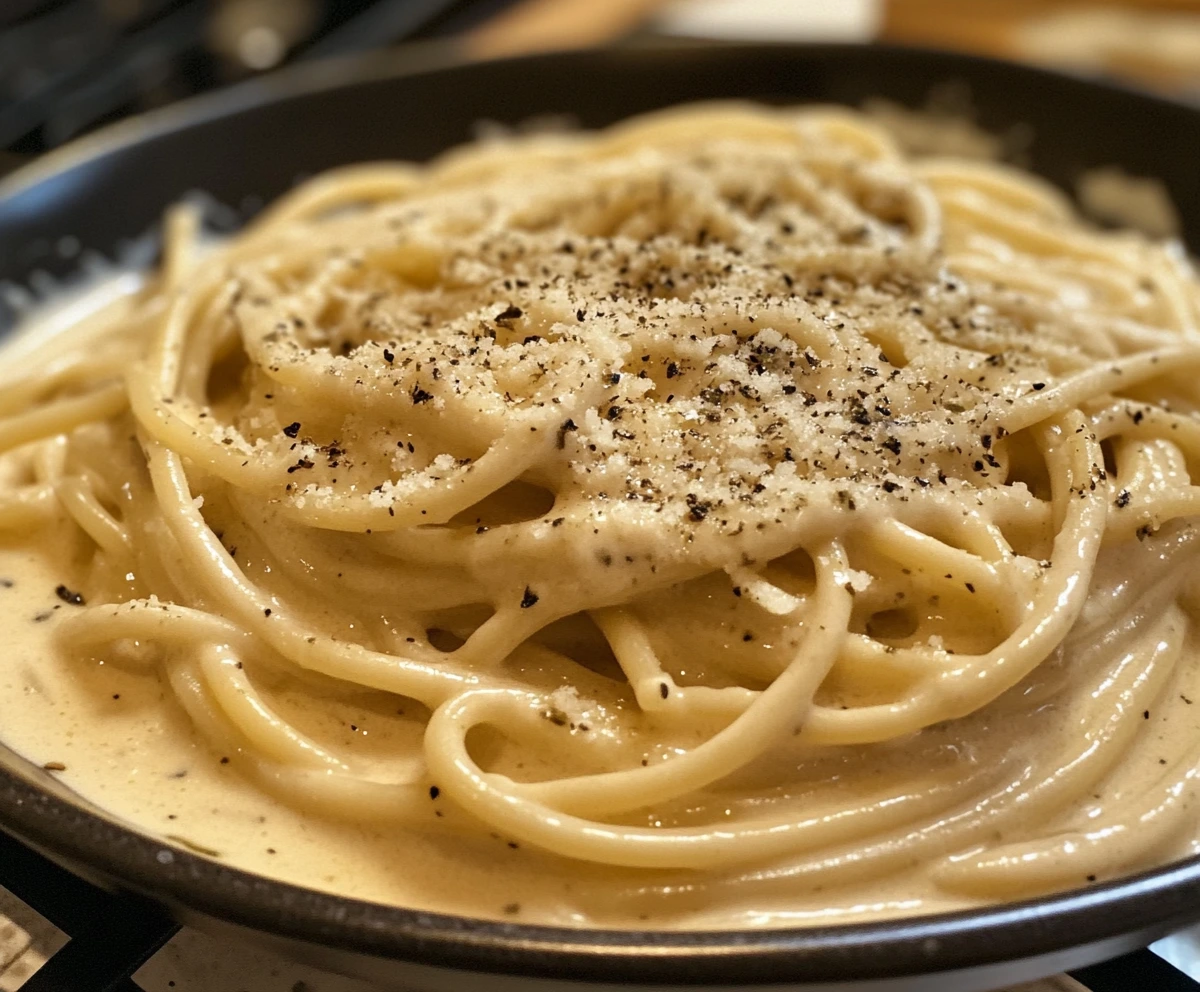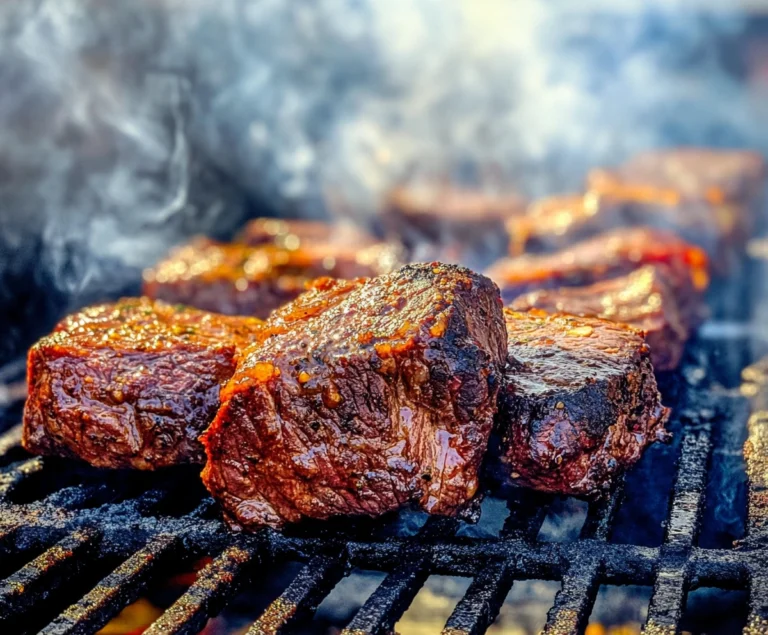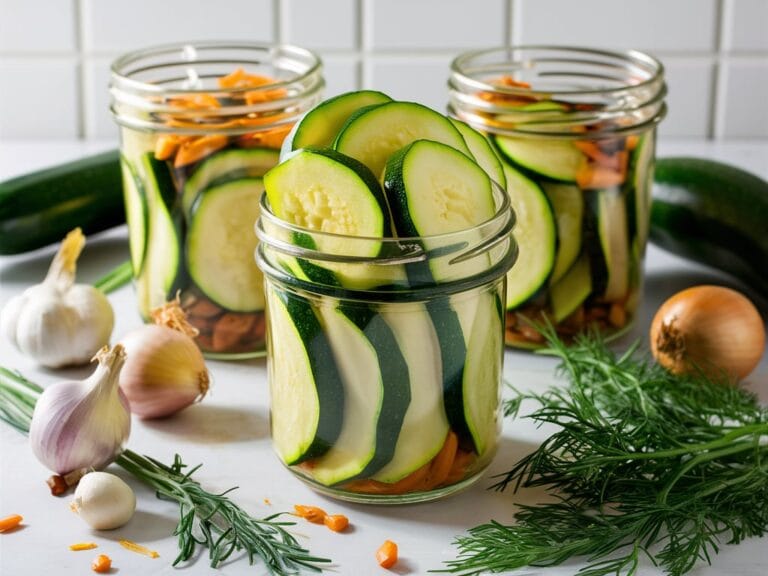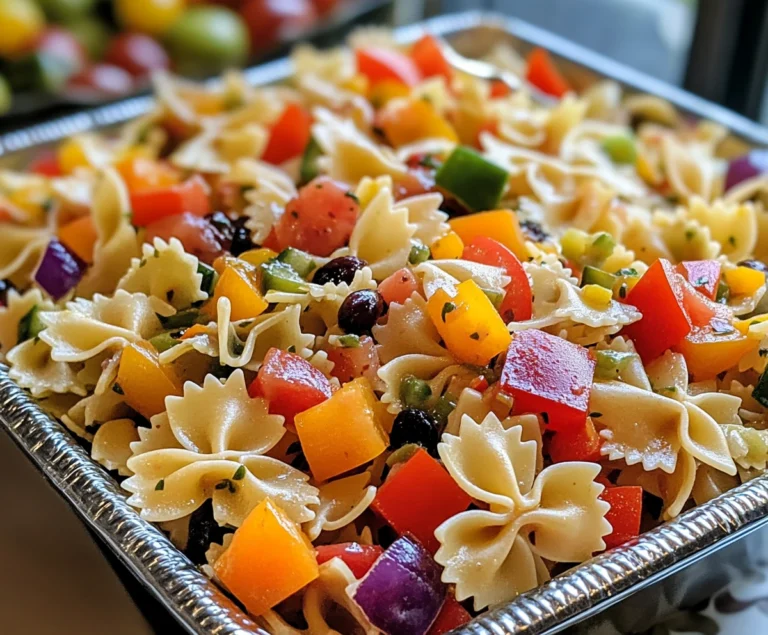What’s the difference between Alfredo sauce and garlic parmesan sauce?
When it comes to rich, creamy sauces, Alfredo sauce and garlic parmesan sauce are some of the most beloved options. Both sauces are celebrated for their indulgent textures and savory flavors, commonly used in dishes like pasta, pizza, and even roasted vegetables. However, while they share some similarities, they differ greatly in flavor profiles, ingredients, and ideal culinary uses.
In this article, we’ll take a deep dive into the unique characteristics of these two sauces, exploring their histories, ingredients, cooking techniques, and the best dishes to use them with. Additionally, we’ll look at the nutritional aspects, potential recipe variations, and frequently asked questions, helping you choose the right sauce for your next meal.
Table of Contents
- Introduction
- History and Origins
- Alfredo Sauce: The Classic Italian Creation
- Garlic Parmesan Sauce: A Modern Take on Flavor
- Ingredients
- Traditional Alfredo Sauce Ingredients
- Key Ingredients in Garlic Parmesan Sauce
- Cooking Techniques
- How to Make Authentic Alfredo Sauce
- Perfecting Homemade Garlic Parmesan Sauce
- Flavor Profiles
- Alfredo Sauce: Rich, Creamy, and Mildly Salty
- Garlic Parmesan Sauce: Bold, Garlicky, and Tangy
- Nutritional Comparison
- Calories, Fats, and Healthier Alternatives
- Best Dishes Using Alfredo Sauce
- Fettuccine Alfredo
- Chicken Alfredo
- Seafood Alfredo
- Best Dishes Using Garlic Parmesan Sauce
- Garlic Parmesan Wings
- Garlic Parmesan Pizza
- Garlic Parmesan Vegetables
- Alfredo Sauce vs. Garlic Parmesan Sauce: Key Differences
- Frequently Asked Questions (FAQs)
- Conclusion: Which Sauce Should You Choose?
Introduction
Both Alfredo sauce and garlic parmesan sauce are staples in many kitchens. Whether you’re preparing an elegant pasta dish or looking to add a punch of flavor to pizza or wings, choosing the right sauce can make all the difference. But with so many creamy sauces available, understanding the differences between these two is essential for any home cook or food enthusiast.
Why This Article Matters
Understanding the key distinctions between these sauces can elevate your cooking by helping you make better pairing decisions, improve the balance of flavors in your dishes, and even customize recipes to suit your dietary preferences. Whether you’re a seasoned chef or a beginner, learning how to distinguish Alfredo sauce from garlic parmesan sauce will broaden your culinary skills and add variety to your meals.
In the sections below, we will break down each sauce’s history, ingredients, flavor profiles, and ideal uses. We will also explore common recipe mistakes, offer healthier substitutions, and provide links to in-depth recipes and techniques to master these sauces at home.
History and Origins
Alfredo Sauce: The Classic Italian Creation
The origins of Alfredo sauce are deeply rooted in Italian cuisine, specifically Rome. Created in the early 20th century by Alfredo di Lelio, this creamy sauce was initially made with just butter and parmesan cheese, tossed with fettuccine pasta to create a dish known as Fettuccine Alfredo. The recipe was developed to please di Lelio’s pregnant wife, who had difficulty eating more complex dishes. The simplicity of butter and cheese coated the pasta in a rich, flavorful sauce that soon became famous worldwide.
As the dish gained popularity outside of Italy, particularly in the U.S., the recipe evolved to include heavy cream, making the sauce even richer and creamier. This Americanized version of Alfredo sauce became a household favorite and is now widely recognized in various cuisines globally.
You can explore the traditional techniques for preparing Chicken Alfredo and variations with seafood by following this guide to chicken and shrimp Alfredo.
Garlic Parmesan Sauce: A Modern Take on Flavor
In contrast to the historical roots of Alfredo sauce, garlic parmesan sauce is a more modern creation, stemming from a growing demand for bold, garlic-infused flavors in American and Italian-American cooking. Garlic has long been a staple ingredient in Italian cuisine, celebrated for its powerful flavor and health benefits. The addition of parmesan cheese to garlic-heavy sauces elevated their flavor profiles, leading to the birth of garlic parmesan sauce.
Popularized in pizzerias, wing shops, and casual dining restaurants, garlic parmesan sauce became a go-to option for dishes needing a stronger, more assertive flavor. It’s commonly used as a base for white pizzas, as a topping for garlic parmesan wings, and as a versatile sauce for roasted vegetables and pasta.
For more garlic-infused recipe ideas, check out how to make perfect garlic parmesan chicken pasta.
Ingredients

The ingredients used in these sauces are fundamental to their different tastes and textures. Let’s take a look at what goes into each sauce and how the components define their flavor profiles.
Traditional Alfredo Sauce Ingredients
- Butter: Provides richness and a velvety texture.
- Heavy Cream: Adds a luxurious thickness to the sauce, making it creamy.
- Parmesan Cheese: Offers a salty, nutty flavor that balances the richness of the cream and butter.
- Optional Garlic or Herbs: Some modern variations include garlic, parsley, or basil for added depth.
The simplicity of Alfredo sauce is what makes it so versatile. With just a few quality ingredients, you can create a sauce that elevates dishes like Fettuccine Alfredo, Chicken Alfredo, or even seafood Alfredo. For those looking to add complexity, black pepper, garlic, or grated nutmeg can provide extra layers of flavor.
Key Ingredients in Garlic Parmesan Sauce
- Butter: Acts as a base for sautéing the garlic.
- Garlic: Fresh or roasted garlic is the star of the sauce, providing a pungent, sharp flavor.
- Parmesan Cheese: Adds a tangy, umami depth that balances the strong garlic taste.
- Heavy Cream (optional): Some recipes call for cream to create a thicker, richer sauce, but it is not always necessary.
- Herbs: Parsley, oregano, or basil can be used to add a herby, fresh note.
The use of fresh garlic is what sets this sauce apart from other cream-based sauces. The garlic is usually sautéed in butter until fragrant, then combined with parmesan and optional cream to create a bold, flavorful sauce.
Cooking Techniques
The success of both Alfredo and garlic parmesan sauces depends largely on technique. While they are easy to make, achieving the perfect consistency and flavor requires a bit of attention to detail.
How to Make Authentic Alfredo Sauce
- Melt the Butter: Begin by melting unsalted butter in a large sauté pan over medium heat. Be careful not to let it brown.
- Add Heavy Cream: Once the butter has fully melted, stir in heavy cream and let the mixture simmer for 3–4 minutes, allowing it to thicken slightly.
- Incorporate Parmesan Cheese: Slowly add grated parmesan cheese while continuously whisking to avoid clumps. The cheese should melt smoothly into the cream and butter mixture.
- Season to Taste: Add salt and black pepper to taste, but be cautious with salt, as parmesan cheese can be salty on its own.
- Toss with Pasta: Immediately toss the sauce with your choice of pasta, ensuring each strand or piece is well coated.
Alfredo sauce is best served fresh. While it can be refrigerated for later use, it may thicken as it cools, so adding a bit of reserved pasta water when reheating helps maintain its creamy consistency.
For more tips on making Alfredo sauce, explore this guide to enhancing Alfredo sauce flavor.
Perfecting Homemade Garlic Parmesan Sauce
- Sauté the Garlic: Start by melting butter in a pan, then sauté minced garlic until fragrant (about 1–2 minutes). Be sure not to let the garlic brown, as this can lead to a bitter flavor.
- Add Heavy Cream (optional): For a creamier garlic parmesan sauce, stir in heavy cream and let it simmer for a couple of minutes until it thickens slightly.
- Incorporate Parmesan Cheese: Add grated parmesan cheese gradually while stirring, allowing it to melt fully and integrate into the sauce.
- Season with Herbs and Spices: If desired, add parsley, basil, oregano, or a pinch of red pepper flakes for some heat.
- Toss with Your Dish: Garlic parmesan sauce pairs well with pasta, wings, or even as a base for white pizza.
The key to a successful garlic parmesan sauce is to ensure the garlic is cooked to perfection without overpowering the other ingredients. The balance of garlic and parmesan is what gives this sauce its bold flavor, and a touch of heavy cream can smooth out the overall texture.
Flavor Profiles
Alfredo Sauce: Rich, Creamy, and Mildly Salty
The hallmark of Alfredo sauce is its luxurious creaminess. With butter and heavy cream forming the base, this sauce offers a silky texture that coats pasta or proteins beautifully. The parmesan cheese adds just enough saltiness to balance the richness of the dairy, making it an ideal choice for simple yet decadent dishes.
Alfredo sauce is generally mild in flavor, allowing the natural creaminess and nuttiness of the cheese to take center stage. This makes it a great option for pairing with dishes that can benefit from a creamy, comforting sauce without overwhelming the other flavors on the plate.
Common dishes that highlight the flavor of Alfredo sauce include:
- Fettuccine Alfredo: A classic pasta dish that emphasizes the sauce’s creaminess.
- Chicken Alfredo: The richness of Alfredo complements the juiciness of grilled or sautéed chicken.
- Seafood Alfredo: Shrimp or scallops pair wonderfully with Alfredo, offering a balance of creamy and briny flavors.
Garlic Parmesan Sauce: Bold, Garlicky, and Tangy
If you’re looking for something with a stronger punch, garlic parmesan sauce is the way to go. The dominant flavor here is, of course, garlic. Whether it’s sautéed, roasted, or minced, garlic provides a pungent and sharp taste that can transform any dish into something bold and flavorful.
The parmesan cheese in this sauce adds a tangy, salty depth, complementing the garlic without overpowering it. The addition of optional heavy cream can smooth out the flavor and give the sauce a richer texture, though it’s not always necessary depending on the dish.
Garlic parmesan sauce is perfect for foods that need a more assertive flavor profile, such as:
- Garlic Parmesan Wings: Tossed in the sauce, these wings become an irresistible appetizer or snack.
- Garlic Parmesan Pizza: Instead of using tomato sauce, garlic parmesan sauce serves as a flavorful base for white pizza.
- Roasted Vegetables: Drizzle this sauce over roasted potatoes or broccoli for a flavorful side dish.
Nutritional Comparison
While both sauces are delicious, it’s worth noting their nutritional content, especially if you’re mindful of your calorie intake or dietary restrictions.
Alfredo Sauce Nutrition
Due to its high butter and heavy cream content, Alfredo sauce is a rich, calorie-dense option. A typical serving (about ¼ cup) contains:
- Calories: ~400–450
- Fat: ~35g
- Carbohydrates: ~4g
- Protein: ~8g
If you’re looking for a healthier version of Alfredo sauce, consider substituting heavy cream with half-and-half or using Greek yogurt for a lighter alternative. You can also reduce the amount of butter used or swap it for a lighter oil, such as olive oil.
Garlic Parmesan Sauce Nutrition
Garlic parmesan sauce is slightly less calorie-dense than Alfredo sauce, particularly if you skip the cream. A typical serving (¼ cup) contains:
- Calories: ~300–350
- Fat: ~25g
- Carbohydrates: ~3g
- Protein: ~7g
For a lighter version of garlic parmesan sauce, consider using less butter or omitting the heavy cream. You can also experiment with different herbs and spices to enhance flavor without adding extra fat or calories.
Best Dishes Using Alfredo Sauce
Alfredo sauce’s creamy, rich texture makes it perfect for a variety of pasta and protein dishes. Here are some classic recipes that showcase the best of this sauce.
Fettuccine Alfredo
This iconic dish is all about simplicity. The wide, flat noodles of fettuccine are ideal for holding the creamy sauce, ensuring every bite is luxurious and satisfying. Traditional Fettuccine Alfredo requires little more than butter, cream, parmesan cheese, and pasta, but feel free to add a pinch of nutmeg or black pepper for extra flavor.
Chicken Alfredo
A popular choice for weeknight dinners, Chicken Alfredo combines juicy, seasoned chicken breast with Alfredo sauce and pasta for a comforting, protein-packed meal. For best results, use grilled or sautéed chicken, and toss it with the sauce just before serving.
Seafood Alfredo
Shrimp, scallops, or even crab meat pair beautifully with Alfredo sauce. The creaminess of the sauce complements the briny, slightly sweet flavor of seafood, making this dish perfect for a special occasion or a fancy dinner at home.
For more recipe inspiration, you can explore different ways to enhance Alfredo sauce dishes in this comprehensive guide.
Best Dishes Using Garlic Parmesan Sauce
Garlic parmesan sauce offers a bold flavor that’s perfect for a wide range of dishes, from appetizers to main courses.
Garlic Parmesan Wings
One of the most popular uses for this sauce is on chicken wings. Toss crispy fried or baked wings in garlic parmesan sauce for a delicious snack or game-day favorite. The sharp garlic flavor cuts through the richness of the wings, while the parmesan adds a savory, tangy finish.
Garlic Parmesan Pizza
For a twist on traditional pizza, try using garlic parmesan sauce as a base instead of tomato sauce. Top with mozzarella, spinach, mushrooms, and even grilled chicken for a unique, garlicky version of white pizza. The combination of garlic and parmesan elevates simple toppings and provides a robust flavor profile that regular marinara can’t match.
Garlic Parmesan Vegetables
This sauce is an excellent way to bring out the best in roasted vegetables. Drizzle it over roasted potatoes, broccoli, or cauliflower for a savory side dish that complements any main course. The garlic and parmesan balance the earthiness of the vegetables, creating a harmonious blend of flavors.
For more creative uses of garlic parmesan sauce, check out this guide to garlic-infused dishes.
Alfredo Sauce vs. Garlic Parmesan Sauce: Key Differences
- Flavor: Alfredo sauce is rich and creamy, with a mild parmesan and buttery flavor, while garlic parmesan sauce is bold, with a pronounced garlic and tangy parmesan taste.
- Ingredients: Alfredo sauce typically uses only butter, heavy cream, and parmesan, while garlic parmesan sauce features garlic as a key ingredient, alongside parmesan and optional cream.
- Uses: Alfredo sauce is more common in pasta and seafood dishes, whereas garlic parmesan sauce works well in heartier dishes like pizza, wings, and roasted vegetables.
Frequently Asked Questions (FAQs)
What’s the difference between Alfredo and Garlic Parmesan sauce?
Alfredo sauce is creamier and focuses on the richness of butter and parmesan cheese. In contrast, garlic parmesan sauce emphasizes a strong garlic flavor, balanced by the tanginess of parmesan, making it bolder and more versatile for different dishes.
Can I substitute Alfredo for Garlic Parmesan sauce in recipes?
Yes, but the flavor will change significantly. If a recipe calls for garlic parmesan sauce, substituting Alfredo will result in a milder, less garlicky dish. Similarly, substituting garlic parmesan sauce for Alfredo will give the dish a more robust, garlic-forward flavor.
Which sauce is healthier?
Alfredo sauce generally contains more calories and fat due to its high cream and butter content. Garlic parmesan sauce can be made lighter, especially if you omit the cream or use it sparingly. For a healthier alternative, you can try using low-fat versions of butter and cream or substitute with Greek yogurt.
Can I make these sauces vegan or dairy-free?
Yes! For a dairy-free Alfredo, use coconut cream or cashew cream in place of heavy cream, and replace butter with olive oil. Similarly, for a vegan garlic parmesan sauce, swap the butter for vegan butter and use a dairy-free parmesan substitute. Nutritional yeast can also be used to mimic the cheesy flavor in both sauces.
Conclusion: Which Sauce Should You Choose?
Choosing between Alfredo sauce and garlic parmesan sauce depends on your flavor preferences and the type of dish you’re preparing. If you’re looking for a rich, creamy sauce with mild flavors, Alfredo is the way to go. It pairs beautifully with pasta, seafood, and chicken, creating an indulgent dining experience.
On the other hand, if you want something bold and garlicky, garlic parmesan sauce is the better option. Its strong garlic flavor and tangy parmesan make it ideal for dishes that need a little extra kick, such as pizza, wings, or roasted vegetables.
Ultimately, both sauces have their place in the kitchen, and experimenting with each can open up a world of culinary possibilities. Whether you’re making a comforting plate of Fettuccine Alfredo or whipping up some spicy garlic parmesan wings, knowing the differences between these sauces will ensure you choose the right one for your next meal.







